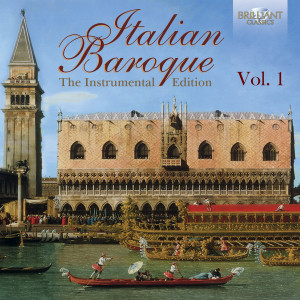Tomaso Giovanni Albinoni
Story
Born to a wealthy paper merchant in Venice, he studied violin and singing. Unlike most composers of his time, he did not seek a post at a church or at courts of nobles or royalty. Instead he composed music independently. Then, in 1722, Maximilian Emanuel II, the Elector of Bavaria, to whom Albinoni had dedicated a set of twelve concertos, invited him to direct the Elector’s operas.
He wrote some fifty operas, but is most noted for his instrumental music, especially his oboe concertos.
His instrumental music greatly attracted the attention of Johann Sebastian Bach, who wrote at least two fugues on Albinoni’s themes and constantly used his basses for harmony exercises for his pupils.
Much of Albinoni’s work was lost in World War II with the destruction of the Dresden State Library. Little is known of his life and music after the mid 1720s. The famous Albinoni Adagio in G Minor is a 1945 reconstruction by Remo Giazotto of a fragment from a slow movement of a trio sonata he discovered among the ruins of the State Library.
Details
- Composer
- Tomaso Giovanni Albinoni
- Date of birth
- 8 juni 1671
- Nationality
- Italian
- Albums
- 10
- Tracks
- 341
10 albums
-

Tomaso Giovanni Albinoni
Albinoni: 12 Cantatas for Soprano and Contralto, Op. 4
-

Tomaso Giovanni Albinoni
Albinoni: 12 Trio Sonatas, Op. 1
-

Tomaso Giovanni Albinoni
Albinoni: Sonate da Chiesa, Op. 4
-

Tomaso Giovanni Albinoni
Albinoni: The Late Violin Sonatas
-

Tomaso Giovanni Albinoni
Albinoni: Trattenimenti Armonici, Op. 6
-

Edward Elgar, Georges Bizet and 27 others
Beautiful Classical Melodies
-

Tomaso Giovanni Albinoni, Giovanni Battista Bassani and 2 others
Italian Baroque: The Instrumental Edition, Vol. 1
-

George Frideric Handel, Nicola Porpora and 10 others
Le Baroque
-

Johann Sebastian Bach, Antonio Vivaldi and Tomaso Giovanni Albinoni
Oboe Concertos, Vol. 1
-

George Frideric Handel, Maurice Ravel and 21 others
Top 30 Funeral Classics
